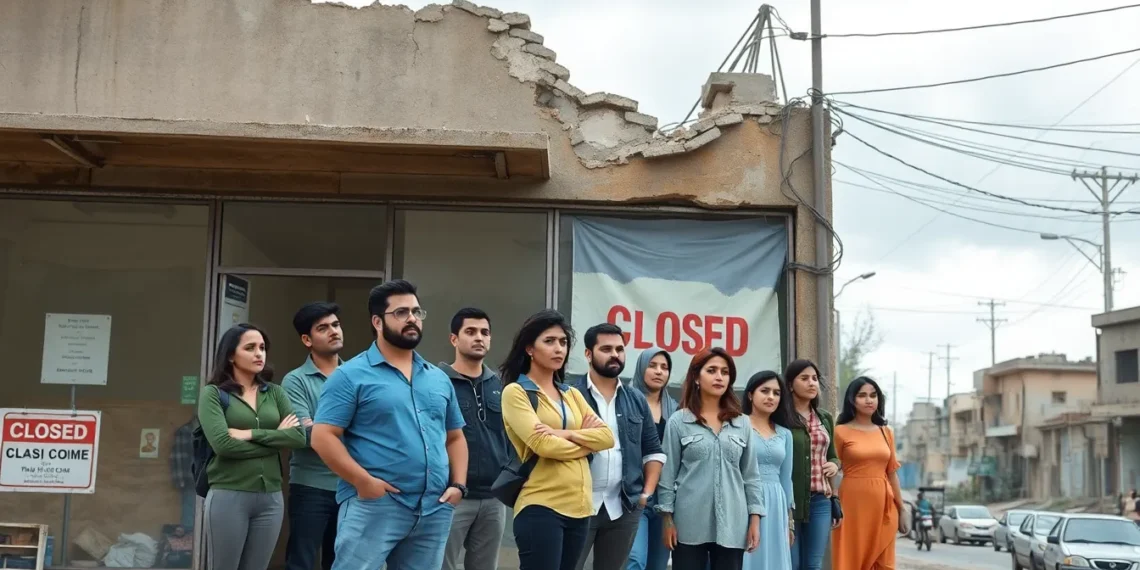War might seem like a thrilling plot twist in a blockbuster movie, but in reality, it’s more of a budget-busting sequel that no one asked for. The economic impact of war stretches far beyond the battlefield, affecting everything from job markets to international trade. Countries often find themselves grappling with skyrocketing debts and inflation that could make a rollercoaster look like a kiddie ride.
While some industries might flourish—hello, defense contractors—many others suffer. Communities face the harsh realities of lost livelihoods and disrupted economies. Understanding these effects is crucial, not just for economists but for anyone who’s ever wondered why their favorite coffee shop suddenly closed its doors. Buckle up as we explore the not-so-glamorous financial fallout of conflict and what it really means for the world.
Overview of Economic Impact of War
War generates profound economic repercussions that ripple through societies. Numerous sectors face disruption, leading to substantial job losses, especially in industries reliant on stable conditions. Jobs in tourism, agriculture, and small businesses often decline during conflicts, as consumer confidence erodes and stability wanes.
Defense contracting, however, thrives amidst military engagements. Specific companies see growth due to increased government spending on weapons and equipment. This growth often comes at the expense of civilian sectors, creating an uneven economic landscape.
International trade also suffers during times of conflict. Tariffs may rise, and trade routes can become insecure, leading to decreased imports and exports. Countries involved in wars frequently pay high costs for disrupted supply chains, making products more expensive and less accessible.
Civilians experience hardships, too. Basic services often falter, as government resources shift to military efforts. Unemployment rates increase, exacerbating poverty levels and fueling social unrest.
Historical examples illustrate these trends. In Iraq, post-war recovery saw slow progress due to shattered infrastructure and diminished foreign investments. Nations can remain mired in economic stagnation long after conflicts cease, signifying long-term ramifications.
To navigate these complex effects, policymakers must account for the broader economic implications of warfare. Understanding these impacts aids in planning for sustainable recovery efforts. Economic resilience depends not only on immediate recovery but also on addressing the underlying causes of vulnerability in societies affected by war.
Historical Context
Understanding the historical context of war provides insight into its economic repercussions. Major wars have shaped economies and influenced global trade dynamics.
Major Wars and Their Economic Effects
World War I triggered profound changes, leading to the Great Depression in the 1930s. Economies faced instability as military spending surged and many resources diverted. World War II accelerated technological advancements, benefitting industries like manufacturing and aviation. The Cold War further shifted economic balances, primarily impacting defense budgets and geopolitical alliances. Outcomes from these conflicts often led to significant inflation rates and unemployment spikes in war-torn regions. Nations engaged in prolonged warfare typically experienced shifts in labor markets, where job losses occurred in civilian sectors while defense industries flourished.
Case Studies of Economic Rebuilds
Japan’s post-World War II recovery exemplifies a successful economic rebuild. Through U.S. assistance and reforms, Japan transformed its economy, achieving rapid growth within decades. In contrast, Iraq’s reconstruction post-2003 illustrates challenges in rebuilding efforts, marked by persistent instability and corruption. Rebuilding requires not only financial resources but also societal cohesion and effective governance. The European Union’s Marshall Plan post-World War II stands as another benchmark, demonstrating how coordinated aid can lead to significant economic revival. Effective policies focused on infrastructure and trade facilitated recovery, contributing to long-term regional stability.
Short-Term Economic Effects
War creates immediate and significant economic consequences. These effects manifest in various ways, influencing both local and global economies.
Disruption of Markets
Markets face disruptions during conflicts. Supply chains break down, leading to shortages of goods. Prices often inflate due to reduced availability. The tourism industry typically suffers when travel becomes unsafe. Agricultural sectors also experience challenges as farming operations slow or cease entirely. Shifts in consumer confidence lead to reduced spending, negatively impacting local businesses. Militarized zones see an increase in demand for specific goods, benefiting some suppliers while harming others. Employment in affected areas declines as businesses close or reduce operations. Overall, wars create an environment of uncertainty that destabilizes markets.
Changes in Employment Rates
Employment rates fluctuate during wartime, often resulting in dramatic shifts. Job losses occur in industries that rely heavily on consumer spending. While defense-related jobs may increase due to government contracts, other sectors face significant cuts. Small businesses see reduced demand as consumers tighten their budgets. Job seekers find fewer opportunities amid rising unemployment. Internally displaced individuals often enter crowded job markets, further increasing competition. Wage stagnation may also arise due to economic instability. These changes in employment exacerbate social inequality, creating long-term challenges for recovery efforts.
Long-Term Economic Consequences
Long-term economic consequences of war include infrastructure damage, shifts in trade relationships, and broader market complexities. These factors work together to influence recovery trajectories.
Infrastructure Damage and Reconstruction
Infrastructure damage often disrupts essential services, such as transportation, healthcare, and education. Rebuilding efforts demand substantial financial resources, which may strain government budgets. Local economies suffer as damaged infrastructure hampers business operations and productivity. Disrupted transportation networks impede trade and increase costs for goods and services. Enhanced recovery strategies focus on investing in resilient infrastructure. Cities with effective reconstruction plans, like those seen in post-war Japan, demonstrate improved economic revitalization. Ultimately, timely investment in infrastructure not only aids recovery but also fosters future economic stability.
Shifts in Trade Relationships
Trade relationships frequently experience significant changes after a conflict. War can lead to the imposition of sanctions, increasing tariffs, and loss of market access for affected countries. Nations involved may find their previous trade partners unwilling to engage due to damaged trust. Emerging markets often capitalize on these shifts, seeking new trade opportunities. Competitive advantages can emerge as businesses pivot to meet changing demands. For example, countries that adopt strategic trade agreements may improve economic resilience over time. Understanding these shifts remains critical for policymakers aiming to foster sustainable economic growth in post-conflict environments.
Government Spending and Fiscal Policies
War generates heightened government spending and adjustments in fiscal policies, impacting national economies. It’s essential to analyze how these changes shape economic landscapes during and after conflicts.
Military Expenditure and Its Implications
Military expenditure surges as governments allocate substantial resources to defense. Such spending can lead to job creation in certain sectors, particularly defense contracting. In contrast, reallocating funds often results in austerity measures for civilian programs, which can diminish public services. Nations experiencing conflicts frequently witness a shift in budget priorities, hindering investments in education and health. Economic growth slows due to these budgetary imbalances. Furthermore, this increased spending can leave long-term fiscal deficits, constraining future government financial stability.
Post-War Economic Policies
Post-war economic policies focus on recovery and stabilization efforts. Governments commonly implement measures to revive growth through investments in infrastructure. These initiatives serve to rebuild not only physical assets but also public trust in governance. Incentives for businesses often emerge to stimulate job creation and enhance local economies. Adapting trade policies becomes another critical aspect as nations work to re-establish lost relationships. A strategic emphasis on foreign aid and investment paves pathways for sustainable recovery, demonstrating its necessity in transitioning from conflict to stability.
Prevent Future Crises
The economic impact of war is profound and far-reaching. It disrupts job markets and destabilizes industries, often leading to long-term challenges for recovery. While some sectors may see temporary gains, the overall economy typically suffers from increased unemployment and diminished consumer confidence.
Policymakers must recognize these complexities to implement effective recovery strategies. Investing in resilient infrastructure and adapting trade policies are essential for fostering sustainable growth. Understanding the economic ramifications of conflict not only aids in recovery efforts but also helps prevent future crises, ensuring societies can rebuild and thrive in the aftermath of war.







